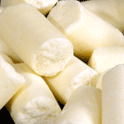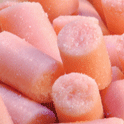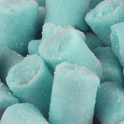|
|
Weaned Dahl SS can rapidly develop elevated blood pressure (>180 mm Hg) when fed an 8% NaCl diet in as little as 2 weeks for some individuals, though the average for the strain is usually closer to 4-6 weeks (1-4). When fed a lower levels of NaCl, hypertension along with vascular and renal lesions develop though the length of time is typically longer (5, 6). The age of the animal also seems to play a role in the development of salt induced hypertension. Dahl SS rats placed on a high salt diet (8%) at 3 or 6 months after weaning developed elevated blood pressure at a slower rate compared to those placed on the diet at weaning. None of the animals typically survive beyond 8 months on the diet regardless of the age at which they start (5). In contrast, the Dahl SR rat fails to exhibit elevated hypertension or vascular and renal lesions even after being placed on a high salt diet for several months (1, 6-8).
As the name implies the SHR develops hypertension spontaneously with increases in blood pressure beginning early in life (5-6 weeks) (9). As the peripheral resistance and normal cardiac output exhibited by the SHR are similar to human hypertension, this strain has been considered a good model of essential hypertension (10). Increasing the vascular resistance with the addition of NaCl (~7%) to the diet and/or saline solution of 1% NaCl provides an additive effect on increasing blood pressure in the SHR (11, 12).
As a model of diet-induced hypertension, the mouse is not widely used. Inbred mice such as the C57BL/6 can develop elevated blood pressure on purified diets high in NaCl (8%), though the time frame for this appears to be on the order of several months (13). Sequencing of the mouse genome coupled with the successful development of transgenic and knockout mouse lines allows researchers to investigate the roles that individual genes play within specific mechanisms of renal physiology under both normal and pathologic conditions (14).
Other Dietary Factors that can Influence the Hypertensive Phenotype
Dietary factors other than sodium can play a role in the degree and onset of hypertension in rodents. When 4% NaCl was added to both a chow diet and a purified ingredient diet, Dahl SS rats fed the purified diet had higher blood pressure and more renal damage compared to chow-fed rats (15). Of equal interest is the finding that offspring from parents who were fed the 4% NaCl purified diet had higher blood pressures regardless of the diet they were fed after weaning, suggesting that the diet fed to the mother during pregnancy can promote hypertension in the offspring. How does the background diet (chow vs. purified) affect the outcome in this case? The reasons are not clear but may be related to fundamental differences between chows and purified diets in the levels of minerals such as sodium and potassium, protein sources, presence or absence of phytochemicals, carbohydrate type, and/or the level and type of fiber. Typical purified ingredient diets contain about 0.1% Na (0.25% NaCl), while chow diets contain about 0.3-0.4% Na (0.75-1.0% NaCl). Soy protein in chow based diets (a common protein source in chows) has been shown to attenuate the development of hypertension in the spontaneous hypertensive rat (SHR) in comparison to diets containing casein (the primary protein source used in purified diets) (16). Soy protein does contain the phytoestrogen, genistein, which has been shown to blunt the increase in blood pressure due to NaCl induced hypertension (17). As casein contains no phytoestrogens, the differences seen in blood pressure between animals fed chows and purified diets may be partially due to the variable levels of genistein and other phytoestrogens within chow (18).
Diets containing normal levels of NaCl but high in fructose or sucrose (around 60% of calories) can increase blood pressure in various rodent models (e.g. Dahl SS, SHR) of hypertension (19-23) and allow researchers to evaluate numerous factors of metabolic syndrome, including hypertriglyceridemia and insulin resistance (21, 22). Although Dahl rats fed high sucrose or fructose diets exhibit hypertension, it is not until a high level of salt (6%) is combined with high sucrose/fructose that there is an exacerbation of the hypertension and a pronounced increase in mortality (24, 25). Outbred rats strains such as the Sprague-Dawley and Wistar rats (which are in widespread use for obesity research) can also develop numerous components of metabolic syndrome (hypertension, insulin resistance, and hypertriglyceridemia) on diets high in fructose (60%) (21, 26) as well as hypertension concurrent with the development of obesity (27-29).
As one might expect not only can one elevate blood pressure through dietary measures, but hypertension can be attenuated by way of the diet. Similar to findings in humans, hypertension resulting from feeding an 8% NaCl diet can be prevented by supplementing the diet with extra potassium (2, 30). Dietary supplementation with antioxidants (such as vitamins E and C) has been shown to lower blood pressure in the stroke-prone, SHR or the Dahl SS rat (31- 33)Therefore, this suggests that low intake of these micro-nutrients could promote hypertension.
We have briefly covered some of the disease models that can be used to study diet induced hypertension. What should be clear is that while some dietary factors promote one phenotype (i.e. sodium induces hypertension), others may promote multiple phenotypes (high fructose diets to promote insulin resistance, hypertriglyceridemia, and hypertension). As the specific goals and needs for each researcher will vary, the careful selection and control of both the strain and diet are of immense importance in the development of a consistent and useful phenotype.
Reference List
1. Dahl LK: Salt and hypertension. Am. J. Clin. Nutr. 25: 231-244, 1972
2. Ogihara,T, Asano,T, Ando,K, Sakoda,H, Anai,M, Shojima,N, Ono,H, Onishi,Y, Fujishiro,M, Abe,M, Fukushima,Y, Kikuchi,M, Fujita,T: High-salt diet enhances insulin signaling and induces insulin resistance in Dahl salt-sensitive rats. Hypertension 40:83-89, 2002
3. Tian,N, Thrasher,KD, Gundy,PD, Hughson,MD, Manning,RD, Jr.: Antioxidant treatment prevents renal damage and dysfunction and reduces arterial pressure in salt-sensitive hypertension. Hypertension 45:934-939, 2005
4. Cowley,AW, Jr., Stoll,M, Greene,AS, Kaldunski,ML, Roman,RJ, Tonellato,PJ, Schork,NJ, Dumas,P, Jacob,HJ: Genetically defined risk of salt sensitivity in an intercross of Brown Norway and Dahl S rats. Physiol Genomics 2:107-115, 2000
5. Dahl LK, Knudsen KD, Heine MA, Leitl GJ: Effects of chronic excess salt ingestion. Modification of experimental hypertension in the rat by variations in the diet. Circulation Research. 22:11-18, 1968
6. Rapp JP, Dene H: Development and characteristics of inbred strains of Dahl salt-sensitive and salt-resistant rats. Hypertension 7: 340-349, 1985
7. Rapp JP: Dahl salt-susceptible and salt-resistant rats: A review. Hypertension 4: 753-763, 1982
8. Inoko M, Kihara Y, Morii I, Fujiware H, Sasayama S: Transition from compensatory hypertrophy to dilated failing left ventricles in Dahl salt-sensitive rats. Am. J. Physiol. 267 (Heart Circ. Phsyiol. 36): H2471-H2482, 1994
9. Okamoto K, Aoki K: Development of a strain of spontaneously hypertensive rats. Jap Circ J 27: 282-293, 1963
10. Ferrone R, Walsh G, Tsuchiya M, Frohlich E: Comparison of hemodynamics in conscious spontaneous and renal hypertensive rats. Am. J. Physiol. 236(3): H403-H408, 1979
11. Aoki K, Yamori Y, Ooshima A, Okamotoa K: Effects of high or low sodium intake in spontaneously hypertensive rats. Jap Circ J 36: 539-545, 1972
12. Chyrsant SG, Walsh GM, Kem DC, Frohlich ED: Hemodynamic and metabolic evidence of salt sensitivity in spontaneously hypertensive rats. Kidney International 15: 33-27, 1979
13. Yu,Q, Larson,DF, Slayback,D, Lundeen,TF, Baxter,JH, Watson,RR: Characterization of high-salt and high-fat diets on cardiac and vascular function in mice. Cardiovasc.Toxicol. 4:37-46, 2004
14. Cvetkovic B, Sigmund CD: Understanding hypertension through genetic manipulation in mice. Kidney International 57: 863-74, 2000.
15. Mattson,DL, Kunert,MP, Kaldunski,ML, Greene,AS, Roman,RJ, Jacob,HJ, Cowley,AW, Jr.: Influence of diet and genetics on hypertension and renal disease in Dahl salt-sensitive rats. Physiol Genomics 16:194-203, 2004
16. Nevala R, Vaskonen T, Vehniainen J, Korpela R, Vapaatalo H: Soy based diet attenuates the development of hypertension when compared to casein based diet in spontaneously hypertensive rat. Life Sci 66(2): 115-124, 2000
17. Cho TM, Peng N, Clark JT, Novak L, Roysommuti S, Prasain J, Wyss JM: Genistein Attenuates the Hypertensive Effects of Dietary NaCl in Hypertensive Male Rats. Endocrinology 148(11):5396-5402, 2007
18. Jensen MN, Ritskes-Hoitinga M: How isoflavone levels in common rodent diets can interfere with the value of animals models and with the experimental results. Laboratory Animals 41: 1-18, 2007
19. Melancon S, Bachelard H, Badeau M, Bourgoin F, Pitre M, Lariviere R, Nadeau A: Effects of high-sucrose feeding on insulin resistance and hemodynamic responses to insulin in spontaneously hypertensive rats. Am. J. Physiol. Heart Circ Physiol 290: H2571-H2581, 2006
20. Pitre M, Nadeau A, Bachelard H: Insuilin sensitivity and hemodynamic responses to insulin in Wistar-Kyoto and spontaneously hypertensive rats. Am. J. Physiol. 271 (Endocrinol. Metab. 34): E658-E668, 1996
21. Oron-Herman M, Kamari Y, Grossman E, Yeger G, Peleg E, Shabtay Z, Shamiss A, Sharabi Y: Metabolic Syndrome: Comparison of the two commonly used animals models. Am. J. Hypertens. 21: 1018-1022, 2008
22. Sanchez-Lozada,LG, Tapia,E, Jimenez,A, Bautista,P, Cristobal,M, Nepomuceno,T, Soto,V, Avila-Casado,C, Nakagawa,T, Johnson,RJ, Herrera-Acosta,J, Franco,M: Fructose-induced metabolic syndrome is associated with
glomerular hypertension and renal microvascular damage in rats. Am J Physiol Renal Physiol 292: F423-F429, 2007
23. Vasudevan,H, Xiang,H, McNeill,JH: Differential regulation of insulin resistance and hypertension by sex hormones in fructose-fed male rats. Am J Physiol Heart Circ Physiol 289:H1335-H1342, 2005
24. Sharma N, Okere IC, Duda, MK, Johnson J, Yuan CL, Chandler MP, Ernsberger P, Hoit BD, Stanley WC. High fructose diet increases mortality in hypertensive rats compared to a complex carbohydrate or high fat diet. Am J Hypertens 20: 403-409, 2007
25. Sharma N, Okere IC, Barrows BR, Lei B, Duda, MK, Yuan CL, Previs SF, Sharov VG, Azimzadeh AM, Ernsberger P, Hoit BD, Sabbah H, Stanley WC. High-sugar diets increase cardiac dysfunction and mortality in hypertension compared to low-carbohydrate or high-starch diets. J Hypertens 26: 1402-1410, 2008
26. Hwang IS, Ho H, Hoffman BB, Reaven GM: Fructose-Induced Insulin Resistance and Hypertension in Rats. Hypertension 10: 512-516, 1987
27. Dobrian,AD, Davies,MJ, Prewitt,RL, Lauterio,TJ: Development of hypertension in a rat model of diet-induced obesity. Hypertension 35:1009-1015, 2000
28. Dobrian,AD, Schriver SD, Lynch T, Prewitt,RL: Effect of salt on hypertension and oxidative stress in a rat model of diet-induced obesity. Am J Physiol Renal Physiol 285: F619-F628, 2003
29. Yamakawa T, Tanaka S, Tamura K, Isoda F, Ukawa K, Yamakura Y, Takanashi Y, Kiuchi Y, Umemura S, Ishii M, Sekihara H: Wistar fatty rat is obese and spontaneously hypertensive. Hypertension 25: 146-150, 1995
30. Dahl LK, Letil G, Heine M: Influence of dietary potassium and sodium/potassium molar ratios on the development of salt hypertension. J Exp Med 136: 318-330, 1972
31. Kopilas,MA, Dang,LNT, Anderson HDI: Effect of dietary chromium on resistance artery function and nitric oxide signaling in the sucrose-fed spontaneously hypertensive rat. J Vasc Res 44:110-118, 2007
32. Vasdev,S, Gill,V, Parai,S, Gadag,V: Dietary vitamin e supplementation attenuates hypertension in Dahl salt-sensitive rats. J Cardiovasc Pharmacol Ther 10:103-111, 2005
33. Noguchi,T, Ikeda,K, Sasaki,Y, Yamamoto,J, Yamori,Y: Effects of vitamin e and sesamin on hypertension and cerebral thrombogenesis in stroke-prone spontaneously hypertensive rats. Clin Exp Pharmacol Physiol 31 (Suppl 2): S24-S26, 2004
|







